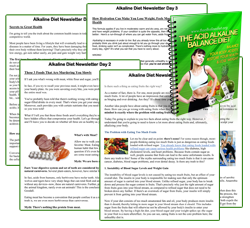Acupuncture – Is It Safe Or Dangerous?
Posted on 31. Mar, 2010 by George Tee in Blog
Since 1970s when the US reestablished its affable relations with the People’s Republic of China, the practice of acupuncture in traditional Chinese medicine has become generally acknowledged in Western countries. They adapt the practice particularly in the treatments for a variety of health conditions.
However just recently, the editorial news of British Medical Journal made a shocking statement based on the researches of specialists in microbiology at the University of Hong Kong linking between the acupuncture to human immunodeficiency virus (HIV) infection. There are reports of patients diagnosed as HIV positive which occurred after they had undergone acupuncture.
Furthermore, Professor Patrick Woo of University of Hong Kong affirmed that there are more than 50 cases of bacterial infections worldwide which have been reported since 1970 and new syndrome identified as mycobacteriosis (generic term for bacteria caused diseases) has been traced. The culprit for the illness can be blamed with the insufficient disinfection of the needles used before the treatment, the editorial said.
Theories and Therapeutic Claims on Acupuncture
To dig more on the issue, it is important to know the significance of acupuncture in the field of alternative medicine. It is a long-established Chinese treatment for pain using fine needles inserted into the skin at designated points of the body. In China, they explained the effectiveness of the therapy based on the philosophy of Taoism that good health depends on a free circulation of “chi” or life energy around the body.
Traditional Chinese medicine (TCM) believed that ailment is caused when chi does not move properly and acupuncturists are well trained to conduct in depth assessment on where acupuncture points should be stimulated. Gathering information on how a person’s chi is flowing by feeling their pulses noting the strength, rhythm and quality. The tongue is also checked to confirm the structure, coating and colour. The patient is also asked about medical history, emotional state and broad-spectrum of health condition. Take note that this therapy is not intended to fight illness but rather to improve the well functioning of body, mind and spirit.
Eastern cultures have promoted the benefits of acupuncture in helping specific condition including arthritis, skin conditions, muscular skeletal problems, infertility, menstrual problems, high blood pressure and migraines. World Health Organization reported that acupuncture was performed in 78 countries and the US National Center for Contemporary and Alternative Medicine ( NCCAM) estimates that it’s been more than one million Americans undergo this alternative procedure each year.
Modern doctors theorize that inserting needles can encourage the smooth release of natural pain-relieving chemicals (endorphins) that obstruct pain and help you feel relaxed. Another theory according to western studies, it also stimulates the adrenal gland that also releases anti-inflammatory chemicals.
Acupuncture has remained a controversial subject despite of its clinical benefits to health. One of the controversies is the use of the “placebo needles” which has effect in the treatment. The term placebo is compared to dummy sugar pill without active ingredients (inert medication) whereas a patient is given this and told that it may get better his/medical condition. It is same thing with this therapy wherein non believers disputed the healing functions of acupuncture.
The malpractice implications
In any medical procedure, there are possible risks involved when performed in-correctly. Generally, Chinese traditional acupuncture is safe only if practiced by trained acupuncturist. If it is done the wrong way, it can be harmful to some parts of the body.
Some effects are minor bleeding due to piercing of small blood vessels and may happen occasionally. If allergic to metals, skin rashes may appear.
Safe medical practices cannot be assured and monitored at all times. The acupuncturist must be registered with an organization which has safe practice code. Training standards and licensee requirements may vary on different country. Safety is paramount concern of British Acupuncture Council that their members are mandatory to meet the standards including the use of sterilized disposable needles, clean equipment and surgical gloves. In Canada, microbiologists say that their practitioners are not reusing the needles and aseptic technique is employed like changing towels and sheets between patients sanitizing all the tools and equipment used.
There is no clear evidence to support the statement linking acupuncture to HIV and some bacterial infection as the researchers claimed but high risks of probability to get illness is understandable if there is no safety measures involve.
The people have every right to react in every issue and controversy concerning their health. It is also important to bear in mind that whatever treatment and alternative medicine applicable to one, may not apply to others. Weighing the two sides of the coin and getting enough knowledge through available information resources can answer all the doubts and questions you have in mind.
References:
http://www.guardian.co.uk/lifeandstyle/besttreatments/2010/mar/19/experts-warn-of-acupuncture-infection-risk
http://www.ncbi.nlm.nih.gov/pubmed/16420542
http://pedmoreacupunctureclinic.co.uk/acupuncture-help-keep-infection-free-winter/
http://www.acupuncturecouncil.com/results.html
http://www.medhunters.com/Article/aPricklyIssue
Acupuncture.” Encyclopedia of Occultism and Parapsychology. 2001. Encyclopedia.com. (March 23, 2010). http://www.encyclopedia.com/doc/1G2-3403800040.html
http://www.cbc.ca/health/story/2010/03/19/acupuncture-infections.html





Recent Comments